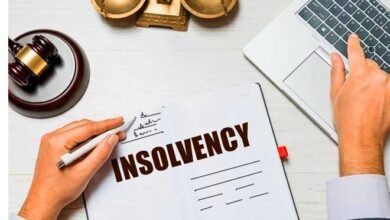Top Mistakes Californians Make When Filing for Bankruptcy
Filing for bankruptcy in California Avoid common mistakes like wrong chapter choice asset disclosure errors and missed deadlines that could hurt your case.

Filing for bankruptcy in California can be a daunting and complex process, often leaving individuals vulnerable to costly errors that jeopardize their financial future. Many residents unknowingly make critical mistakes such as failing to disclose assets, choosing the wrong bankruptcy chapter, or mishandling paperwork that lead to case delays, dismissals, or even legal consequences. Understanding these common pitfalls is essential for anyone considering bankruptcy, as proper preparation can mean the difference between a fresh start and prolonged financial distress.
When filing for bankruptcy in California, debtors must navigate strict legal requirements, exemption rules, and court procedures. Unfortunately, many people rush into the process without proper guidance, resulting in avoidable setbacks. Whether filing for Chapter 7 liquidation or Chapter 13 repayment, knowing the top mistakes and how to avoid them can help Californians protect their assets, secure debt relief, and move forward with confidence.
Top Mistakes Californians Make When Filing for Bankruptcy
Failing to Disclose All Assets
One of the most serious mistakes individuals make when filing for bankruptcy is failing to disclose all their assets. Some debtors mistakenly believe that omitting certain properties, bank accounts, or valuables will allow them to keep those assets. However, bankruptcy law requires full transparency, and intentionally hiding assets constitutes fraud, which can lead to case dismissal, fines, or even criminal charges. In California, bankruptcy exemptions allow filers to protect certain assets, Filing for Bankruptcy, vehicle, or personal belongings, up to specific limits.
Choosing the Wrong Bankruptcy Chapter
Another common mistake is selecting the wrong bankruptcy chapter. Chapter 7 (liquidation) and Chapter 13 (reorganization) serve different purposes, and choosing incorrectly can have long-term financial consequences. Chapter 7 is designed for individuals with limited income who cannot repay their debts. It involves liquidating non-exempt assets to discharge unsecured debts like credit cards and medical bills. Chapter 13, on the other hand, involves a repayment plan spanning three to five years. It’s ideal for those with steady income who want to protect assets like homes from Filing for Bankruptcy.
Transferring Assets Before Filing
Some debtors attempt to shield assets by transferring them to family members or friends before filing. This is a major red flag for bankruptcy trustees, who scrutinize such transactions. If a transfer is deemed fraudulent, the court may reverse it, deny the discharge of debts, or impose penalties. Under bankruptcy law, any asset transfers within two years of filing must be reported. Even well-intentioned transfers such as giving a car to a relative Filing for Bankruptcy. Instead of attempting to hide assets, debtors should rely on California’s exemption laws.
Running Up Credit Card Debt Before Filing
Some individuals mistakenly believe that maxing out credit cards before filing for bankruptcy will allow them to discharge the debt without consequences. However, courts closely examine recent credit card activity. If luxury purchases, cash advances, or large transactions occur within 90 days of filing, creditors can challenge the discharge of those debts, arguing they were incurred fraudulently. Necessary expenses, such as groceries or medical bills, are generally Filing for Bankruptcy, but frivolous spending can jeopardize the case.
Missing Deadlines or Filing Incomplete Paperwork
Bankruptcy involves strict deadlines and extensive documentation. Missing court dates, failing to complete credit counseling, or submitting incomplete forms can lead to case dismissal. Many debtors underestimate the paperwork required, including tax returns, pay stubs, bank statements, and a detailed list of creditors. A single error such as an incorrect account number or omitted creditor can delay proceedings or prevent certain debts from being discharged. Working with an experienced bankruptcy attorney ensures all documents are Filing for Bankruptcy.
Not Consulting a Bankruptcy Attorney
One of the biggest mistakes Californians make is attempting to file bankruptcy without legal guidance. While it’s possible to file pro se (without an attorney), the process is fraught with complexities that can lead to costly errors. An attorney helps navigate exemptions, ensures proper filing procedures, and represents the debtor in court if disputes arise. Many bankruptcy lawyers offer affordable payment plans, and their expertise often saves clients money in the long run by avoiding mistakes.
Ignoring Tax Debts and Student Loans
While bankruptcy can eliminate many unsecured debts, certain obligations like recent tax debts and most student loans are typically non-dischargeable. Some filers mistakenly believe all debts will be wiped out, only to face continued collection efforts post-bankruptcy. In rare cases, student loans may be discharged if the debtor proves “undue hardship,” but this requires a separate legal proceeding. Tax debts may qualify for discharge under specific conditions.
Taking on New Debt After Filing
After filing for bankruptcy, some individuals immediately apply for new credit, which can be risky. While rebuilding credit is important, taking on substantial debt too soon can lead to financial trouble again. Additionally, new debt acquired after filing is not covered by the bankruptcy discharge, meaning the debtor remains fully liable. A better approach is to focus on responsible credit use, such as secured credit cards or small installment loans, while adhering to a strict budget.
Not Attending the 341 Meeting of Creditors
All bankruptcy filers must attend a 341 meeting (also called the creditors’ meeting), where the trustee verifies the information in the petition. Skipping this meeting results in automatic dismissal. While creditors rarely attend these meetings, the trustee will ask questions about assets, income, and debts. Being unprepared or providing inconsistent answers can raise Filing for Bankruptcy. An attorney can help debtors anticipate questions and ensure they present their case accurately.
Failing to Reaffirm Secured Debts Properly
In Chapter 7 bankruptcy, debtors must decide whether to surrender, redeem, or reaffirm secured debts (like car loans or mortgages). Reaffirming keeps the asset but reinstates personal liability for the debt. Some filers mistakenly believe they can keep making payments without reaffirming, only to face repossession later. Properly reaffirming a debt requires court approval and should be done with legal advice to avoid unfavorable terms.
Read More: Mental Health Rights in Illinois Legal Protections in 2025
Conclusion
Filing for bankruptcy in California can provide crucial financial relief, but only when done correctly. By understanding and avoiding common mistakes such as hiding assets, choosing the wrong chapter, or missing deadlines debtors can navigate the process more effectively and achieve the best possible outcome. Consulting with an experienced bankruptcy attorney ensures proper guidance, helping filers maximize exemptions, meet legal requirements, and secure a true fresh start.
Ultimately, filing for bankruptcy in California doesn’t have to be overwhelming if approached with careful planning and professional support. Recognizing these pitfalls early allows individuals to make informed decisions, protect their assets, and rebuild their financial future with confidence. Whether seeking debt discharge through Chapter 7 or restructuring payments via Chapter 13, avoiding these key mistakes is essential for a successful bankruptcy case and long-term stability.
FAQs
Can I keep my house if I file for bankruptcy in California?
Yes, California’s homestead exemption allows you to protect equity in your primary residence, but the amount depends on the exemption system you choose.
Will bankruptcy wipe out all my debts?
No, certain debts like student loans, recent taxes, and child support are generally non-dischargeable.
How long does bankruptcy stay on my credit report?
Chapter 7 remains for 10 years, while Chapter 13 stays for 7 years, but you can start rebuilding credit immediately.
Can I file for bankruptcy without a lawyer?
Yes, but the process is complex, and mistakes can be costly. An attorney increases the chances of a successful filing.
What happens if my bankruptcy case is dismissed?
You may lose protections like the automatic stay, and creditors can resume collection actions. Refiling may be possible but could involve waiting periods.











